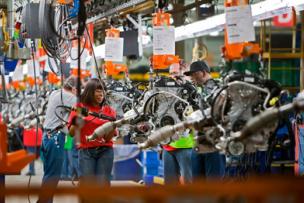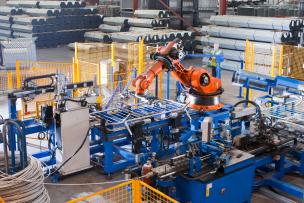The twin trade advancements “will calm the waters,” says Omar S. Nashashibi, founding partner of The Franklin Partnership LLP and a head of government relations for One Voice, the advocacy program of the Precision Metalforming Association and the National Tooling and Machining Association. “It’s definitely encouraging anytime there is some resolution.”
Phase 1 of the U.S.–China trade truce includes a commitment for China to buy $200 billion of American goods and services by 2021 and preserves the bulk of the tariffs on $360 billion of Chinese goods.
Experts say businesses should have a system in place to quickly assess value-added risk. Learn more in “How to Future-Proof Your Business from Tariff Fallout.”
The current easing of trade tensions is only part of the story. Phase 2 negotiations promise to be charged, says Jason Alexander, principal and industrial sector senior analyst at RSM, which advises middle markets.
The U.S. and China still need to resolve some of the thorniest issues on the table, including disputes over digital trade, cybersecurity and non-tariff barriers to U.S. manufacturers and service providers.
Moreover, the new agreement also does not address China’s controversial use of subsidies and state-owned enterprises to boost steel and solar panel industries.
“Overall, this part of the deal didn’t really address the big things people are talking about,” Alexander says. “The harder issues remain.”
 What are your thoughts on the latest U.S. trade agreements? Join the Shop Talk discussion in our Manufacturing Forum.
What are your thoughts on the latest U.S. trade agreements? Join the Shop Talk discussion in our Manufacturing Forum.
Alexander expects that the Phase 1 agreement is unlikely to have an impact on U.S. manufacturing in the near term.
Data shows that U.S. companies manufacturing in China are shifting to other offshore locations instead of moving that work back to the U.S. In a recent U.S. Chamber of Commerce survey, 40 percent of large U.S. companies with Chinese operations reported that they were planning to, or already had, shifted manufacturing to other offshore locations such as Vietnam, India and Malaysia, according to Forbes.
Some companies have been positively affected by the trade war: “Amid Tariffs and Trade War, Manufacturing Shops Gain New Business.”
Advocates for U.S. manufacturing are less circumspect about the USMCA, also referred to as “the new NAFTA.”
Passage of the USMCA could alleviate many of the concerns of manufacturers over further disruptions in their supply chains, Nashashibi says. The original, 26-year-old North American Free Trade Agreement certainly was in need of a few updates, he notes, and points to a few of the more prominent changes in the USMCA.
To start, the USMCA includes significant changes related to automobiles. Under the “Rules of Origin” provision, cars must have 75 percent of their components manufactured in the U.S., Mexico or Canada to qualify for zero tariffs.
The update also includes new policies on labor laws that are expected to make it easier for Mexican workers to unionize.
Similarly, Alexander predicts that while the signing of the USMCA will be “good overall” for the U.S. economy, he cautions that the deal—which covers a trillion dollars in trade—isn’t likely to significantly impact job creation in this country.
Plus, he adds, U.S. manufacturers struggle to find workers with the right skills. Along with 469,000 open manufacturing positions as of September 2019, there is less than one unemployed person for every job opening, Alexander says.
“Companies are having to be very creative to attract people,” he says. “It’s across the board: transportation, logistics, trucking, warehousing space.”
Are we tackling the skills gap in the best way possible? An industry veteran shares his perspective in “Machining Skills Gap: ‘It’s Not Dirty’ Won’t Cut It.”
In the wake of the twin trade deals, industry advocates say the Trump administration is increasingly turning its attention to other overseas markets, including the European Union.
Of specific importance are new tariffs the U.S. threatens to impose on EU copper-based alloys, including copper plates, brass, bronze and some nickel-based items, Nashashibi says.
“It will interrupt some supply chains,” he says. “The point is, so much is interconnected.”
So, how can you plan ahead in this rapidly changing, often chaotic environment? One Voice advises members to examine their risk exposure on multiple levels including: raw materials costs, operating expenses, exposure to tariffs on imported parts, machines, chemicals and other products.
The recent trade developments present both challenges and opportunities—communication and due diligence are key, advocates say.
“The smaller businesses need to be looking at their trade associations for support,” Nashashibi says. “You need to talk to customers and suppliers [and understand] when the new requirements start to phase in.”
[NOTE: Updated January 29, 2020, to reflect the signing of the U.S.–Mexico–Canada Agreement by the president.]





Talk to Us!
Hello I need to know how I make a return
40Hi Rubio, here is the link to the return policy and the customer service phone number https://www.mscdirect.com/customer-service/return-policy
1-800-645-7270
48Leave a reply
Your email address will not be published. Required fields are marked *